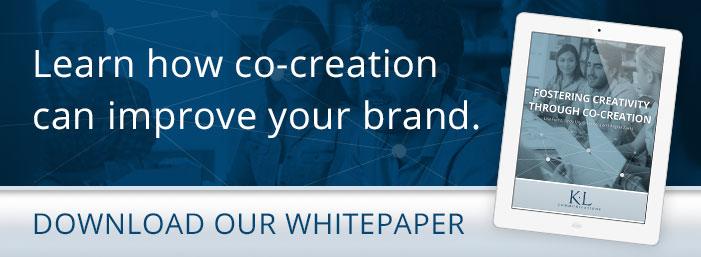
As a marketing term, customer centricity has been around for ages. You’ve probably heard it in various contexts and you may even have a vague idea of what it means. Obviously, customer centricity is the concept of making your customer the center of your business, but even that definition is vague and leaves lots of room for interpretation.
The truth is that customer centricity is a rather vague term for a very specific approach to business. Every business probably thinks they’re customer-centric. They adopt mottos like “the customer is always right” and “20 percent of customers provide 80 percent of the profits,” so of course they assume they have a customer-centric organization. But do they really?
The answer is “no” – or, at least, probably not. What these companies have is a customer-focused organization, which isn’t the same thing. It’s almost customer centric, but with one key difference: their goal is to find customers who want the product they offer. Customer centricity focuses on providing customers with the product or service that fits their needs.
Still confused? Professor Luigi-Nicolae Dumitrescu breaks commercial relationships down into three distinct categories:
- Price-driven: focus on margins
- Product-driven: focus on products
- Customer-driven: focus on customers
The problem with a price-driven or product-driven approach is that customers aren’t loyal to the company. If a better price or product comes along, customers will switch. Even unique products are open to new competition entering the market with similar ideas.
With a customer-centric strategy, your entire business revolves around your customers. You don’t simply think of them as the buyers or the generators of profit; they are literally the reason for your business. It’s a tough concept to grasp and possibly an even tougher one to implement, but it can be done with a few steps, which we’ll cover later.
Why Now?
First, you may be wondering: why is customer centricity so important now? If it’s been a concept for years, why is it just now catching on? It’s simple: now is the digital age. Today’s customers are connected to the companies they patronize in more ways than ever before, thanks almost entirely to the internet. They’re not happy with the disconnected feel of old-fashioned business. They want to know the companies they’re buying from, and they want to feel involved in more than just purchases. They want understanding and empathy. If you’re hesitant to adopt the customer-centric approach, the bad news is that technology absolutely demands that you change your mind. The good news is that this same technology makes customer centricity easier to implement than in years past.
How Customer Centricity Generates Value
If you’re hesitant to change, the immediate question is “why?” Why would you be so resistant to a strategy that’s been proven to increase the value of your company?
It’s true that customer centricity takes time. You won’t see immediate results, but the results you will see are well worth the time and money investment now. By adopting this strategy, you’ll see an influx of loyal, committed customers who buy from your company again and again. They’ll love the products and services you provide, and they’ll feel emotionally invested in your company’s growth. In addition, you’ll weed out the mediocre customers who are willing to buy from any company that offers the best deal, even if the product or service is inferior.
You may end up with fewer customers if you use this approach, but the customers you do have will be much more valuable to your company and your profits will increase.
How to Make It Work
Now that you’re sold on the idea, how can you make it work? Well, here are some actionable steps:
1. Create the Role of Chief Customer Officer.
Someone at your organization needs to have the main job of implementing this strategy and ensuring that it succeeds. This person may be an existing employee, or you might make a new position titled Chief Customer Officer. The decision is up to you.
2. Define Your Customers.
Under the direction of the Chief Customer Officer, your organization needs to define your customers and determine which ones are the best. Defining your customers seems easy, but it’s probably more complicated than you think. Do you sell directly to the end user? If not, is the end user your customer, or is the person or company who purchases directly from you the customer? Are your stakeholders customers? Once you’ve decided, it’s time to segment these customers into groups. In general, customers fall into one of three groups:
- Mediocre customers who are willing to change brands if the product or price is better.
- Good customers who are mostly loyal.
- Great customers who are loyal to your company, only leaving when given direct incentive to do so (such as a terrible buying experience that was never remedied). Focus on these customers.
3. Upgrade Your Market Research Strategy from Reactive to Proactive
You’ll need to rethink your approach to traditional market research data collection. Even think of the term “data collection” for awhile. It assumes that we, the company, know best and simply need the customer to confirm our hypotheses.
For a firm to be truly customer centric, it requires a reciprocal partnership with its customers. That is why MR needs to allow for customer co-creation or at least, an open ear to their unmet needs. For example, consider a more responsive Twitter account that asks for customer feedback. It’s one thing to say customers are at the heart of what we do and quite another to actually allow your customers to help forge your strategic direction.
Final Thoughts
Customer centricity is absolutely crucial for the success of any modern business. Now that you know the basics, you already have a leg up on the competition. It’s time to dig deeper with this strategy, adopting it as an ideology and actionable plan across your entire organization. It’s a big task, but the rewards are well worth the time and effort.
